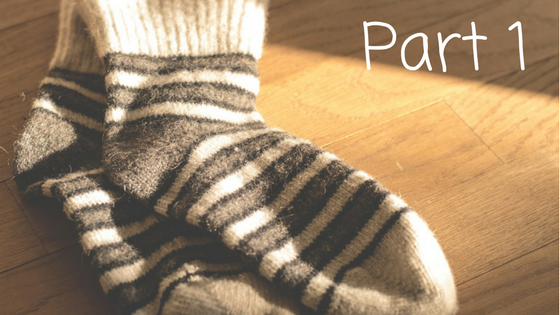If you are looking to cozy up a cold room, look no further than your floor.
And we don’t mean laying down an area rug or putting on some slippers.
We mean heating up your room from the floor up.
Underfloor heating is the most comfortable way to stay warm.
Bar none.
I should know. I lived with it in Switzerland. And loved every minute of it!
How does it work?
There are two types of systems available: electric and warm water based heating. The former utilizes electricity to heat a thin wire, and the latter uses warm water which circulates through the heating pipe. Both types are installed under your finished flooring. When they’re switched on, the system evenly warms up your flooring surface, and this heat in turn radiates through the flooring and into your home.
The suitability of each system depends on your project and preference. The electric system may be better for small areas such as bathrooms and renovations as it does not raise floor levels. Wet systems are ideal for larger areas or new constructions as they are fitted into the structural sub-floor.
Comfort
Underfloor heating heats the whole room evenly from the floor up, giving you the comfort of warm floors, and the benefit of an invisible, quiet and maintenance-free heating system. These systems can be zoned room by room and everyone in the house can set their own levels of comfort, from the basement to the bedroom.
Energy Efficient
Since underfloor heating uses a lower temperature than standard radiators or baseboards, heating costs are reduced. Because the heat source is spread throughout the floor, it’s more evenly distributed and provides higher levels of comfort.
Connecting the underfloor heating to a programmable thermostat will help energy efficiency as well as giving you the luxury of waking up to warm floors.
What types of floors can you use underfloor heating with?
It can be used under virtually any floor finish. The best flooring for underfloor heating are ones with good heat conductivity qualities (such as tile or stone), will heat up quicker (saving energy), give more heat output and is more efficient to run. TIP: Cork and rubber tiles are generally not good material to use over heated floors due to their natural high thermal resistance qualities.
Tile and stone
Reported as the best material to use radiant floor heating under, tile and stone are heated up faster with the electric vs. the hot water system. When choosing tile flooring, you should note that the thickness of the tile will impact the heat-up time, and a thicker tile will take slightly longer to warm-up compared to a thinner one.
Wood
Make a warm wood floor even more inviting. Remember, when using wood or laminate flooring, it’s important to select one with good thermal conductivity. So choose a denser species of wood. The thinner the flooring material and the higher the density, the shorter the heat-up time and more responsive the system will be.
It’s recommended that wood or laminate thickness should be no more than 18mm so as not to hinder the efficiency of the heating system. TIP: Wider boards may show more ‘movement’ than narrow boards, so always check with your wood flooring supplier for suitability to use with underfloor heating.
Continued in part 2….

